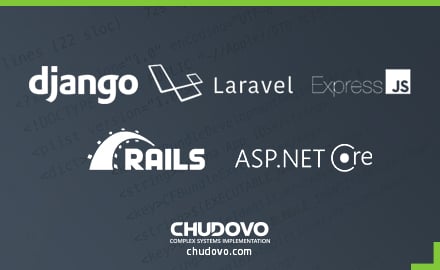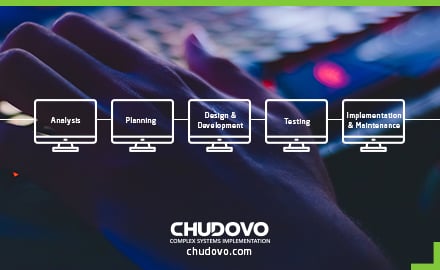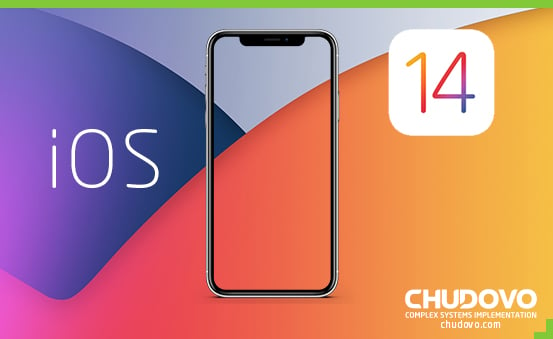
Backend Development: How to Choose the Best Framework for Your Project
Table of contents
In today’s world, where digitalization is a buzzword, businesses need to set a unique image on the crest of a wave. That’s where the role of websites and top web frameworks enters into play. Doubtlessly, the significance of web development has bumped up extensively in the past few years. The milestone of 1 Billion websites worldwide has already crossed in 2014, with daily additions getting larger each day. After all, the website is a key to drive whopping traffic and the desired brand name.
The concept of web development is quite vast and mainly categorized into front-end and back-end. Where the former refers to building web pages with the use of HTML, CSS, and JavaScript to interact with customers, the latter, at the same time, is about maintaining the concealed part of websites by opting for the best web framework. Though both hold indispensable importance in the functioning of a website, back-end frameworks are generally less familiar among users as it is wholly intangible. But what exactly are they? This guide explains the ins-and-outs of backend frameworks and how to choose the best backend framework to let beginners have a grasp of it.
Why Choosing The Right Technology Matters?
There is a lot of ongoing debate on the matter that whether or not the selection of the right technology matters. In fact, a lot of entrepreneurial IT businesses and software companies are on the hunt for the verdict. However, the fact is simple, opting for the appropriate technology, or say, the best web framework in the case of web development, is extremely crucial to offer a great user experience. Below-mentioned is the number of reasons that will explain why choosing the right technology matters.
Attracting The Suitable Talent
The job of software developers is quite a few times more productive and effective if they get the chance to work on a particular technology in which they are proficient. For example, if a software company has selected a .NET framework Windows 10 to develop websites and applications, it will help to collaborate well with the pro .NET developers., as a result of which, the end product will be super splendid to experience success.
Duration To Code
Another attribute that plays a major role in the selection of technology is the amount of time it takes to develop a solution for a problem. While some technologies provide shortcuts to code quicker, others might be specific but offer incredible functionalities. Simply put, the choice of technology relies on the project timeline and capabilities of the team members.
Code Maintenance
Selecting the right technology, keeping in mind the factor of code maintenance, can have long-term effects on the project. Failure to maintain, enhance, and expand the code can result in certain undesirable consequences or collapse of the project.
Speed Of Execution
Though there isn’t much concern in context to speed with the introduction of faster computers, the significance of execution speed is still substantial for game developers. This being the reason, they harness the best language developments, such as C++ (a programming language commonly used for the functioning of .NET Framework Windows 10.
Future Support
Considering a technology that is about to stay highly recognized and consistent in the future is a smart idea. Not only this will help you find the right talent from time to time, but it also entails fewer efforts when it comes to complying with the trends. If there is any uncertainty regarding the future of technology, it is suggested to avoid it in the first place.
What Is A Backend Framework?
Backend is the ‘behind-the-scenes’ functionality or brain of a website. It is the server-side of development that majorly focuses on creating, updating, and monitoring websites or web applications. The three parts of back-end development are a server, an application, and a database.
Server – Server is a computer that receives incoming requests. Any computer connected to the network can act as a server. Back-end developers can use their own computers as servers when they develop websites or apps.
API – APS(Application Programming Interface) refers to the set of protocols, routines, and tools with the help of which applications communicate with each other. Talking specifically, Web APIs are the back-end’s interfaces that are harnessed to provide data to the front-end.
Databases – Data storage applications are meant to provide dynamic content updates for websites. A client might either ask to view the already stored information in the databases or request to submit or add data to the database. This helps to lessen the loan on the main memory of the CPU and allows data to be retrieved in the case of a crashed server.
Back-end developers create and maintain server-side tools and applications by taking into use the constituents of back-end architecture. While executing so, the choice of the best or the most popular backend frameworks plays a crucial role in future support. Let’s understand the factors that need to be considered when choosing the back-end framework.
Factors To Consider When Choosing Best Backend Framework
USAGE AND PURPOSE
Before developers might start working on the most popular backend framework, it is foremost to understand the purpose behind their use and whether the framework is suitable or not. There is actually no need for a framework when there is a requirement of only a specific part of the framework or want a pretty URL system alone. However, the most popular backend frameworks will be highly useful if applications run on CRUD operations or if developers have to create CMS in 2-3 days and they are familiar with the framework.
PATTERN OF SOFTWARE
In general, most popular web frameworks are deployed with MVC (Model-View-Controller) patterns. This helps developers or programmers to write better and tighter code by separating the data: the model, the logic: the controller, and the user interface: the view from each other. Nevertheless, a software company can also plump for top website frameworks that use the distinguished patterns, such as MVP (Model-View-Presenter), MVA (Model-View-Adapter), and AVC (Application-View-Controller).
EASE OF INSTALLATION
The best web framework is one that can be installed easily and quickly. Failure to achieve so can not only make the installation process strenuous but also pose hardship when it comes to testing and deploying the application. Simply put, an IT or software company should prefer a framework that contains a simple setup and run as fast as possible.
CORE LIBRARY
As of recent trends, most popular web frameworks are developed as libraries of libraries. Pylon is an impeccable example; it stands at the cutting-edge position in context to web framework ranking. The plus point of using such a framework is that it lets a developer swap parts of the library with other ones of choice.
The fun fact is, almost all top website frameworks today contain a library that offers extensive features such as AJAX, Authentication, Authorization, Caching, Data Sanitization, Data Validation, Templating, and URL Mapping or rewriting. While choosing a framework, make sure that the library is in such a way that it prevents you from writing repetitive code and should possess more controlled features.
DOCUMENTATION
Having a framework that has complete and intensive documentation with several examples, snippets, and tutorials is key to success in web development. Surprisingly, the top website frameworks offer explained and well-defined documentation that helps to attract power users and reduce confusion among people.
OTHER FACTORS
Clearly, the technical specifications of a framework are a must to consider when opting for the best backend framework. In addition to the aforesaid, it is also vital to keep in mind the attributes of a learning curve, hosting requirements, the inclusion of JS library, AB Abstraction and ORM, unit testing, scaling, the community, ease of creating and availability, and bug fixes. The cost and size of complexity of the project also hold ultimate significance in the decision making.
Top 5 Popular Backend Development Frameworks
Finding the best and appropriate framework is quite essential for a developer to produce productivity and effective performance throughout. The core benefits of using a framework in software or web development include time-saving, scalability, robustness, security, and integrations. Here is the list of the top 5 backend frameworks in the programming frameworks list that can offer all such advantages.
DJANGO
At present, Django stands on top of the web framework ranking for its ‘battery included’ philosophy and end-to-end technical features. This one of the leading open-source backend frameworks are mainly based on Python, the third-most-popular programming language in 2021. It is one of the top web frameworks for creating sophisticated and feature-rich database-driven websites and applications.
Pros of Django – There is no denying the fact that many modern developers prefer Django over other backend frameworks. The reason for this fact comprises its utter flexibility, faster development, REST frameworks for APIs, machine learning capabilities, and of course, its battery included features.
Cons of Django – While Django is incredible and known for its unique capabilities, some of its disadvantages entail specific improvements in it. These are lack of convention, non-suitability for smaller projects, monolithic framework, steep learning curve, and multiple request issues.
LARAVEL
Laravel is the popular open-source PHP backend framework that is used to develop Symfony-based applications for the web. It is deployed with expressive and elegant syntax that makes the development process quite creative and innovative. The best part about this PHP backend framework is that it provides plentiful ways of accessing relational databases in addition to maintenance and deployment utilities.
Pros of Laravel – Laravel is a picture-perfect backend framework for a developer who loves to code using PHP language. Its core advantages comprise authentication, Simple API, Cache backends, logs, and testing. Other than this, it also provides ease of execution with great documentation, queue management, and eloquent ORM.
Cons of Laravel – In contrast to all the plus points of Laravel, the popular PHP backend framework, there are a few drawbacks that can impact performance if factors associated with the selection of the right framework are not considered. These lack in-built support, complex to use in the first place, and gets problematic with certain upgrades.
RUBY ON RAILS
Ruby On Rails, also known as Rails or RoR, is one of the unique tools for web development. It is built with a Ruby programming language, which promotes the use of web standards like XML, JSON, JavaScript, HTML, and CSS.
Pros of Ruby on Rails – Top advantages of installing and using Ruby on Rails for web development are security, simplicity to use, high development speed, enthusiastic community, easy business logic implementation, and compatibility with front-end frameworks.
Cons of Ruby on Rails – Certain disadvantages of one of the unique backend frameworks include lack of flexibility, speed issues, and lower popularity. Performance time and continuous evolution also make it complex for developers to perform with ease.
ASP .NET Core
ASP.NET Core is one of the most talked-about when it comes to the web framework’s popularity. It is an open-source framework and an extended version of the ASP .NET Framework. Interestingly, ASP.NET Core runs across the entirety of .NET Framework Windows 10 and Dot NET Core.
Pros of ASP.NET Core – The top advantages of ASP.NET Core are almost similar to the basic .NET framework with a list of certain additions. These are storage customization options, speed, minimal coding, and easy maintenance.
Cons of ASP.NET Core – ASP.NET Core is a little awkward for the purpose of running on .NET Framework Windows 10. Apart from this, security and heaviness are major concerns with the framework.
EXPRESS.JS
Express.js or Express is an open-source server-side most popular backend framework for developing mobile applications. It comprises a set of incredible tools, features, packages, and plugins which makes the process of development easy and simple.
Pros Of Express.js – The interesting benefits of this one of the best backend frameworks in the programming frameworks list are flexibility, fast app development, extensibility, minimized expenses, easy third-party integration, and open-source community.
Cons of Express.js – Though Express.js is one of the most popular backend frameworks for its convenience and ease of use, there are still certain disadvantages. This amounts to its event-driven nature (Callbacks), unsuitability with heavy computation tasks, and immaturity of tooling.
Key Takeaways
Website development is substantially critical in the execution and success of digital businesses today. With the whooping boost up in demand for business websites, the software companies are on the hunt for the right talent, thus opening new doors for developers. While the role of front-end developers is a little creative and straightforward, back-end developers are also said to play a pivotal role in web development, although it is intangible.
The success of backend web development highly relies on the choice of framework. From the aforementioned facts, it is clear that there are a number of factors that need to be taken care of while installing the most popular web frameworks in the programming frameworks list. In other words, it is not merely about the web framework’s popularity, but its features, suitability, ease of applications, and other approaches that make backend frameworks the best for web development.



